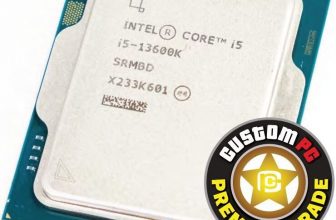AMD Ryzen 5 2600X Review

AMD Ryzen 5 2600X Review
The second coming of the six-core Ryzen has Jeremy Laird worrying about the likelihood of his computing redemption.
Familiar with the broad outline of AMD’s second-generation Ryzen processors in the form of the eight- core Ryzen 7 2700X? Then allow us to flesh out the details with this new, more affordable, six-core variant.
Unlike the 2700X, which occupies a slightly different position in AMD’s CPU hierarchy to its 1800X predecessor, the Ryzen 5 2600X sits adjacent to the old Ryzen 5 1600X. In short, it’s the premium six-core model. But, just like the 2700X, it’s based on what AMD and its production partner Global Foundries are styling as a new 12nm production process.
In theory, the new process offers a range of improvements over 14nm, including 10 per cent performance improvement, and 15 per cent transistor density. But AMD has not gifted the new chip with the density improvement part of the 12nm process. It has the same die size and transistor count as the first Ryzens. That also reflects the fact that, save for a few tweaks to cache hierarchy, AMD’s Zen CPU architecture has been carried over untouched.
That means you get the same 16MB of L3 cache, the same 20 lanes of PCIe 3.0 connectivity into the chip, the same six cores with support for two threads per core, and the same dual-channel DDR4 memory controller. What has changed are the 2600X’s clock speeds. At least, the top turbo rating has been bumped up from 4GHz to 4.2GHz. The base clock remains at 3.6GHz.
So AMD has promised us a little more performance for a little less money. In practice, that’s how the 2600X stacks up: 10 per cent more performance is the overall expectation, and verily the 2600X cranks out precisely that much in Cinebench’s multi-threaded graphics rendering index, lifting the 1600X’s 1,256 points to 1,381. The 2600X is likewise 10 per cent quicker running Cinebench in single-thread mode.
Video encoding using the x264 codec shows a similar 10 per cent uptick. The 1600X’s 27.1fps improves to 30.2. From there, the picture is more complicated. The new chip does reduce memory latency fractionally, but memory bandwidth is unchanged.
Could this chip make you move from lntel to AMD?
More relevant and also indicative of the limitations of the new 12nm process, peak power under full CPU load rises from 155 to 177W – a 14 per cent increase in return for just 10 per cent more performance. Overclocking is similarly disappointing. In strict terms, the chip didn’t overclock at all, achieving 4.2GHz or the same frequency as the advertised all-core turbo. However, forcing all cores to 4.2GHz isn’t the same as the potential for all cores to run at 4.2GHz in turbo mode. So, overclocking does release a tiny bit more performance. But with the old 1600X running at its maximum overclock of 4.1GHz, the performance delta actually shrinks to just five per cent.
The upshot is that the 2600X has little to offer anyone who owns a 1600X. Instead, the 2600X makes it a bit more appealing to undertake a major upgrade, to switch from Intel to AMD. More appealing, that is, but not a slam dunk. As good as Ryzen is – and it is very good – this second iteration doesn’t move the game on. Any reservations we may have had about its outright gaming ability or its meagre overclocking headroom remain. Time will tell, but the suspicion remains that the true second-gen Ryzen, the one with Zen 2 rather than Zen+ architecture, will be the CPU that fully delivers on what is a very clever and promising processor.
DEVELOPER: AMD
WEB: www.amd.com/ryzen
| FEATURES | 9/10 | EASE OF USE | 9/10 |
| PERFORMANCE | 8/10 | VALUE | 9/10 |
Gaming optimisations are still an issue, but computational power is unquestionable and system value is excellent..
» Rating 9/10
When you purchase through links on our site, I may earn an affiliate commission. Here’s how it works.
| Benchmark | Ryzen 5 2600X | Ryzen 5 1600X | Intel Core i5 8400 |
| h264 (fps) | 63 | 55 | 48 |
| h265 (fps) | 27 | 24 | 29 |
| VeraCrypt (MB/s) | 10,950 | 10,350 | 5,850 |
| Civ VI Al (turns/s) | 4.42 | 4.19 | 4.66 |
| Rise of the TR (fps) | 124 | 122 | 135 |
| Power Idle/Load (W) | 49/177 | 49/155 | 47/112 |
• Socket: AM4
• Type: 64-bit
• Process: 12nm
• Cores: Six
• Threads: 12
• Clock: 3.6GHz (4.2GHz turbo)
• Cache: 16 MB L3, 3 MB L2. 576KB L1
• Mem: DDR4, two channels, ECC support
• Max PCIe: 16+4 lanes •TDP: 95W
• Cooler: Wraith Spire.









